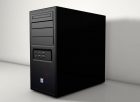Apple USB-C: A Comprehensive Guide to the Future of Connectivity

Introduction
Apple USB-C, a term that has been buzzing around technological circles, is Apple’s answer to the future of connectivity. In this article, we will provide an in-depth overview of what Apple USB-C is, the various types available, their popularity, and delve into the quantitative measurements of its performance. Additionally, we will discuss the key differences between different Apple USB-C variants and explore a historical perspective on their advantages and disadvantages. So, let’s dive into the world of Apple USB-C and discover its potential.
I. Overview of Apple USB-C

Apple USB-C is a universal connector designed by Apple Inc. to streamline connectivity across their devices. With the aim of reducing clutter and increasing versatility, Apple USB-C is a compact, reversible connector that enables faster data transfer, charging capabilities, and video output. It has become a standard feature in many of Apple’s latest devices, including MacBooks, iPads, and iPhones.
II. Comprehensive Presentation of Apple USB-C
A. Types of Apple USB-C
There are various types of Apple USB-C cables and adapters, each serving specific purposes. The most common types include USB-C to Lightning cable, USB-C to USB-A cable, USB-C to USB-C cable, and USB-C to HDMI adapter. These variations allow users to connect their Apple devices to a broad range of devices and accessories, such as external displays, storage devices, and even other Apple devices for charging and data transfer.
B. Popularity and Adoption
Apple USB-C has gained significant popularity among Apple users due to its efficiency and flexibility. The adoption rate of this technology has increased steadily, as consumers seek faster data transfer speeds, reliable charging options, and seamless device compatibility. Apple’s decision to incorporate USB-C ports in their latest MacBook models has further propelled its prominence in the market.
III. Quantitative Measurements of Apple USB-C
To understand the performance capabilities of Apple USB-C, let’s explore some of the quantitative measurements associated with this technology.
A. Data Transfer Speed
Apple USB-C supports faster data transfer speeds compared to its predecessors. It can reach data transfer speeds of up to 10 Gbps when used with compatible devices. This capability ensures quick and efficient file transfers, boosting productivity and saving valuable time.
B. Charging Capabilities
Apple USB-C offers fast charging capabilities for supported devices, allowing users to charge their devices more rapidly compared to older charging technologies. The USB Power Delivery (USB-PD) feature enables higher power delivery, resulting in reduced charging times.
C. Video Output
Apple USB-C supports high-quality video output, allowing users to connect their devices to external displays or projectors. By utilizing USB-C to HDMI adapters, users can enjoy crystal-clear video resolutions, enhancing their multimedia experience.
IV. Discussion: Key Differences between Apple USB-C Variants
While Apple USB-C connectors share a common purpose, there are variations that differentiate them based on their usage and functionalities. Let’s discuss some key differences between different Apple USB-C variants:
A. USB-C to Lightning Cable
This variant is primarily used for connecting Apple devices with Lightning ports, such as iPhones and iPads, to USB-C ports on MacBooks and other supporting devices. It enables fast charging and data transfer between these devices.
B. USB-C to USB-A Cable
The USB-C to USB-A cable allows users to connect their USB-C devices with computers or peripherals that have USB-A ports. This bridge connector facilitates easy data transfer or charging between older devices and Apple’s newer USB-C devices.
C. USB-C to USB-C Cable
Designed for devices that support USB-C, this cable offers fast charging and data transfer capabilities when used between compatible devices. It eliminates the need for adapters or dongles, providing a straightforward connection option.
D. USB-C to HDMI Adapter
This adapter enables users to connect their USB-C devices to HDMI displays or projectors. It supports high-resolution video output and can replicate the device’s screen onto a larger external display, enhancing productivity and multimedia experiences.
V. Historical Overview of Apple USB-C Benefits and Drawbacks
Apple USB-C has revolutionized connectivity, but it’s essential to understand its historical context when analyzing its advantages and disadvantages.
A. Benefits
1. Versatility: Apple USB-C provides a unified, reversible connector that seamlessly connects various devices, eliminating the need for multiple cables and adapters.
2. Increased Performance: The faster data transfer speeds and charging capabilities offered by Apple USB-C enhance user experience and productivity.
3. Simplified Connectivity: With Apple USB-C, users can connect a variety of devices, including external displays, storage devices, and accessories, using a single connector.
B. Drawbacks
1. Transition Period: The transition from older charging ports to USB-C created compatibility issues and required users to purchase new cables or adapters.
2. Dongle Dependency: Certain devices or accessories may not have USB-C ports, necessitating the use of dongles or adapters to connect to Apple USB-C devices.
Conclusion
Apple USB-C is a groundbreaking technology that has transformed how we connect and interact with our Apple devices. With its faster data transfer speeds, versatile connectivity options, and efficient charging capabilities, Apple USB-C has become an indispensable feature for many Apple users. As technology continues to evolve, USB-C is set to become the standard for connectivity, enabling a seamless and efficient user experience.
References:
– Apple.com – USB-C: The Ultimate Guide
– Digital Trends – Apple USB-C: Everything you need to know











